Smartphones are often referred to as portable computers these days. However, if you ever make this statement in front of a PC gamer, you will most likely be at the receiving end of one or more of the following:
1. An eye roll
2. Sheer contempt
3. Verbal abuse
4. Facial expression of pure disappointment
Jokes apart, there was solid reasoning behind this strong reaction from PC gamers till now. Smartphones, however good they are, can simply not compete with even average PC builds when it comes to gaming. Although some recent mobile games now have great graphics, when it comes to PC gaming, we are talking about a different league altogether. As a result, experiencing PC-grade gaming on the go has remained a dream for most. This is where ASUS ROG Ally steps in. If you are wondering why I took such a long time to come to the point, this is because we are talking about a category creator here. While the Steam Deck was the first device to enter the market that offered a truly portable PC gaming experience, it felt like a first-generation product that fell short in several areas. ASUS ROG Ally, without a doubt, is a superior device that can actually deliver on the promises that were initially made by Steam Deck. If you are wondering if this portable handheld can replace your PC, let’s dive into the detailed review.
Design and display
ASUS ROG Ally is a hefty handheld device and there is no denying this fact. However, I felt comfortable while using it, particularly in normal-length gaming sessions. It has been crafted to ensure that you are able to reach all the buttons with ease.
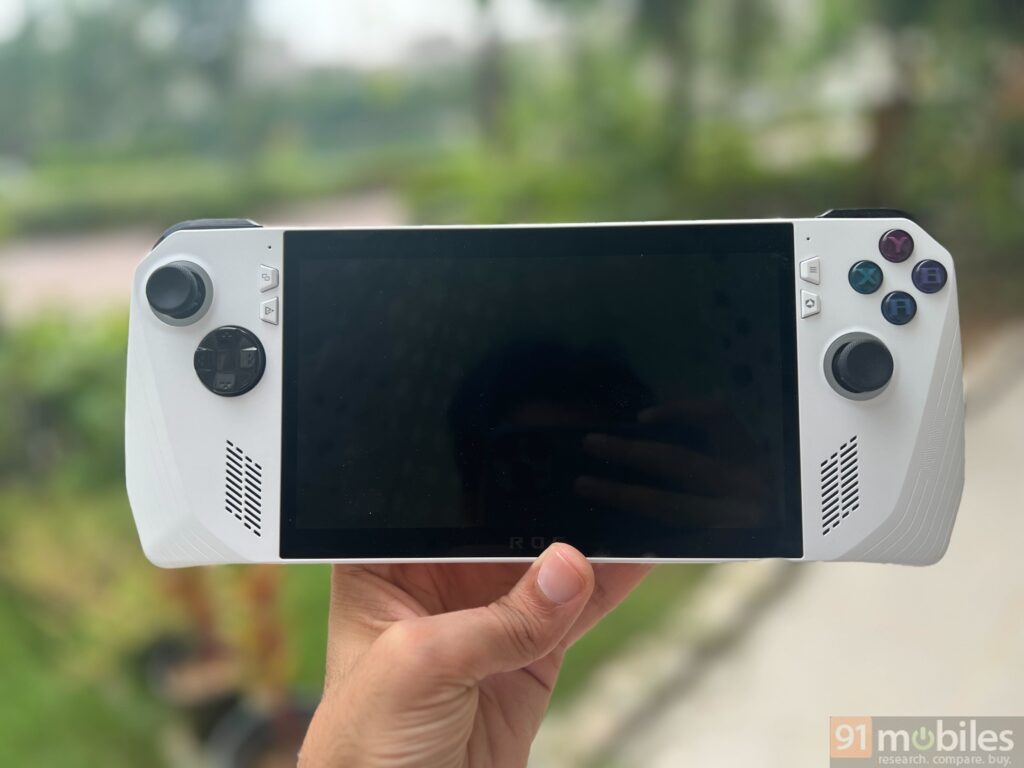
The brand has chosen a conventional controller design, so you would likely not take much time before getting used to the button placement here. I particularly liked that ASUS managed to include slightly taller analog sticks here (not the case with some other handhelds like Nintendo Switch). Even the buttons, triggers, and direction pad quality here feels similar to that of an Xbox controller, which is an impressive feat.
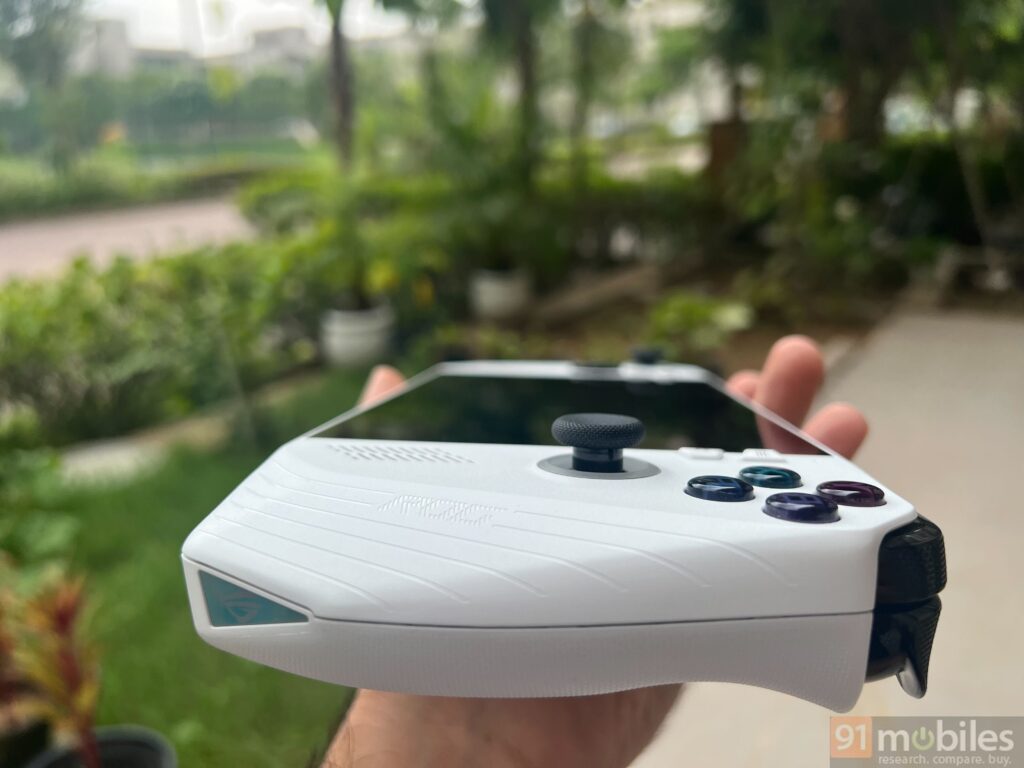
One of the only qualms I had with ROG Ally’s design was the placement of the air vents, which I found to be uncomfortably close to the RB and LB buttons. If you’re playing a graphically demanding game, you can expect the vents to release gusts of hot wind and feel these on the tips of your fingers. While this design issue hardly made the device unusable for me, I would definitely appreciate it if the next iteration of Ally can somehow tackle this in an innovative manner.
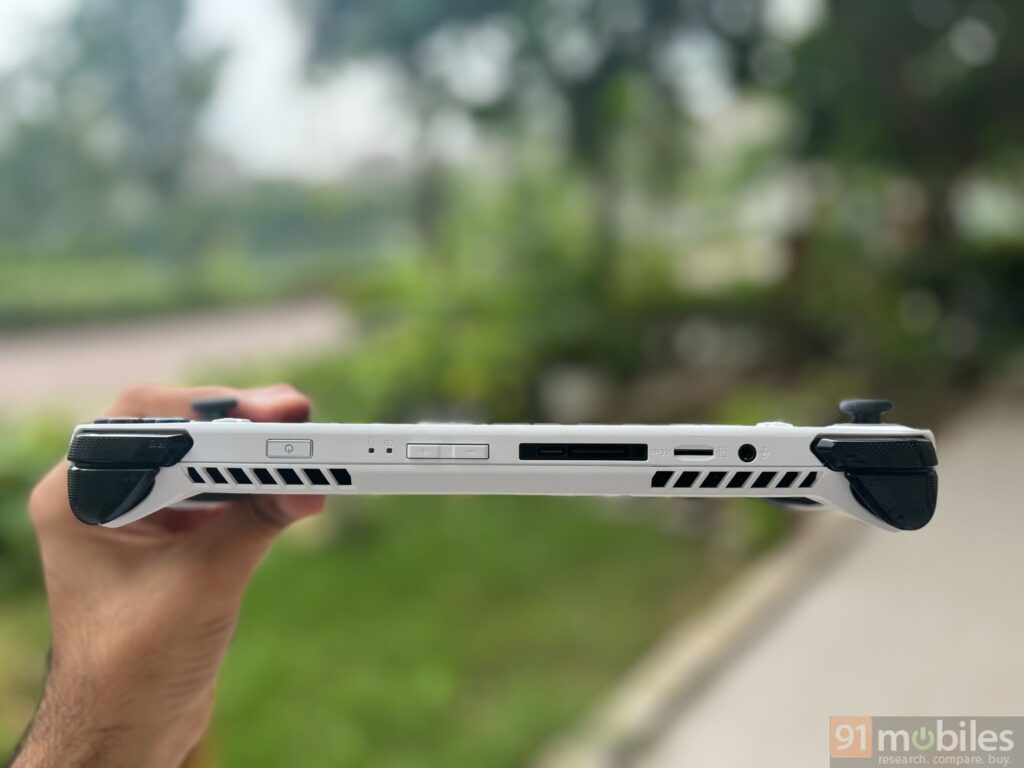
Due to the air vent position, one of the known issues is that the SD cards inside the slot, placed right above the vent, are getting malfunctioning for some users. As this issue leaves the SD card slot completely unusable, the company has issued a statement that a future update will address this issue and will fine-tune the default and minimum fan speeds on the device. Till that update arrives, I would suggest that you just make use of the onboard storage, i.e. 512GB.
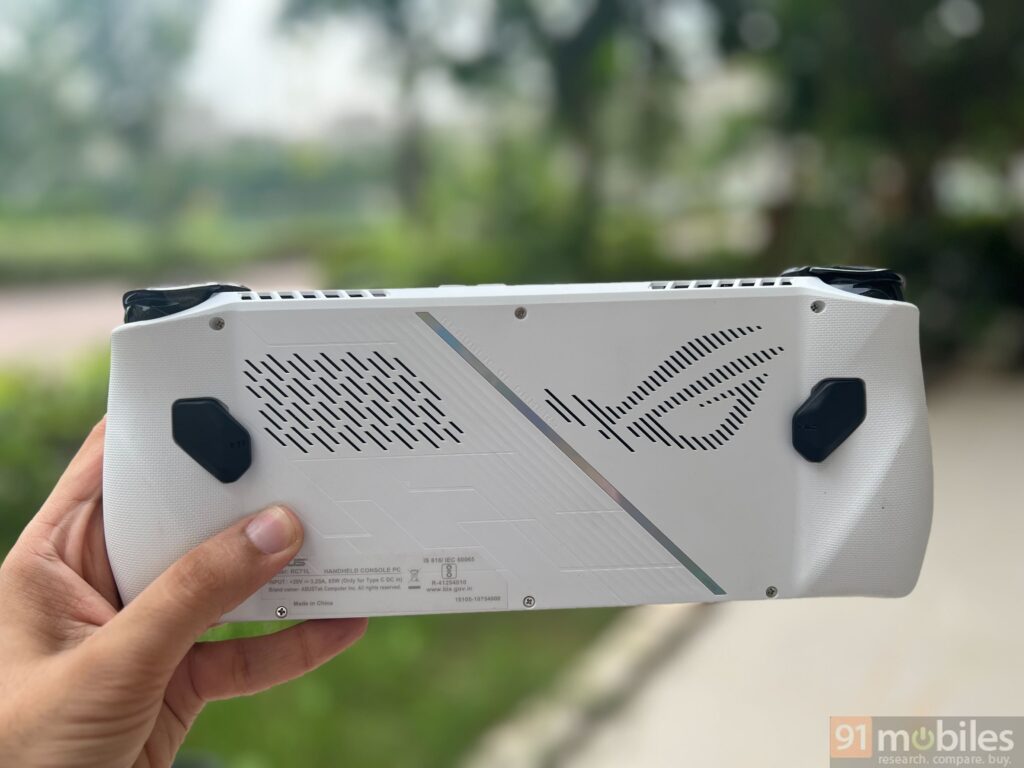
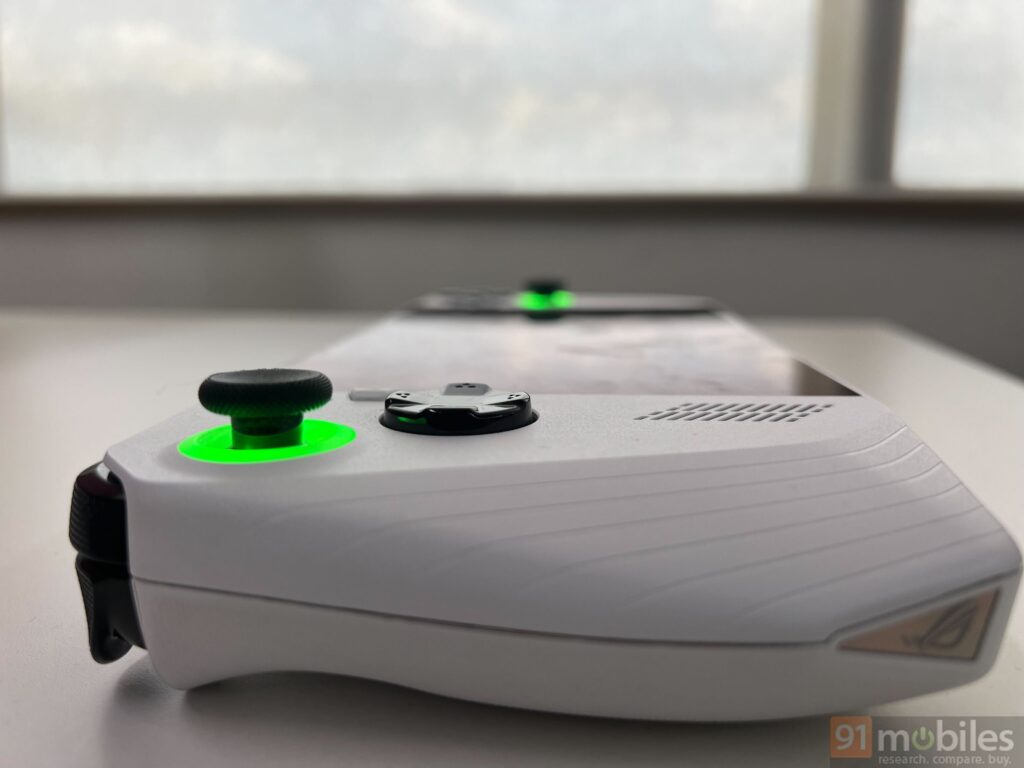
Coming to the display, we have a unique selling point for the ASUS ROG Ally. While the Steam Deck offered a 1,280 x 800 resolution display, the ROG Ally offers a 7-inch full-HD (1,920 x 1,080 pixels) display with a 16:9 aspect ratio and a maximum refresh rate of up to 120Hz, offering a smooth and lag-free gaming experience. While the Steam Deck was immensely popular, one of the major complaints users had with the device was that it didn’t offer a high display refresh rate or screen resolution. As PC games can offer great graphical fidelity, the high-resolution display here ensures that you don’t lose out on the details.
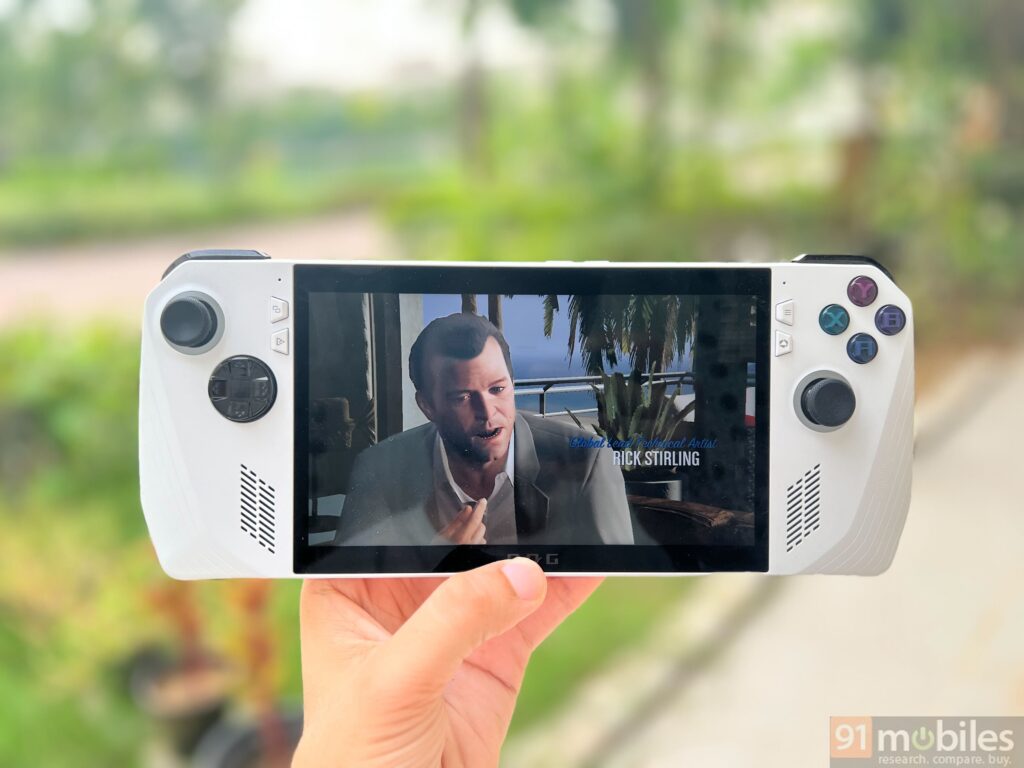
As far as outdoor visibility is concerned, the ROG Ally display does struggle under direct sunlight but not to a point where you cannot play the games you like. In a way, you can say that we are spoiled by modern phone displays with high peak brightness levels that manage to show content comfortably even outdoors. But you need to keep your expectations in check with the ROG Ally display in this regard.
Gaming performance
I’m not going to lie, I was sceptical when I first booted up the ROG Ally. The initial setup process took longer than it does for most other devices and I faced issues with some unnecessary pop-ups as well. Despite knowing that the device ships with the capable AMD Ryzen Z1 Extreme Processor and AMD Radeon Graphics (AMD RDNA 3, 12 CUs, up to 2.7GHz, up to 8.6 Teraflops), there was a part of me that thought I would experience frame drops. However, I was in for a pleasant surprise. The ROG Ally managed to run demanding games such as NBA 2K21, Dirt 3, GTA 5, and more with relative ease and at consistent frame rates. With the onboard SSD, the loading times were really impressive and the 16GB LPDDR5 memory ensured that I didn’t get any random crashes too.
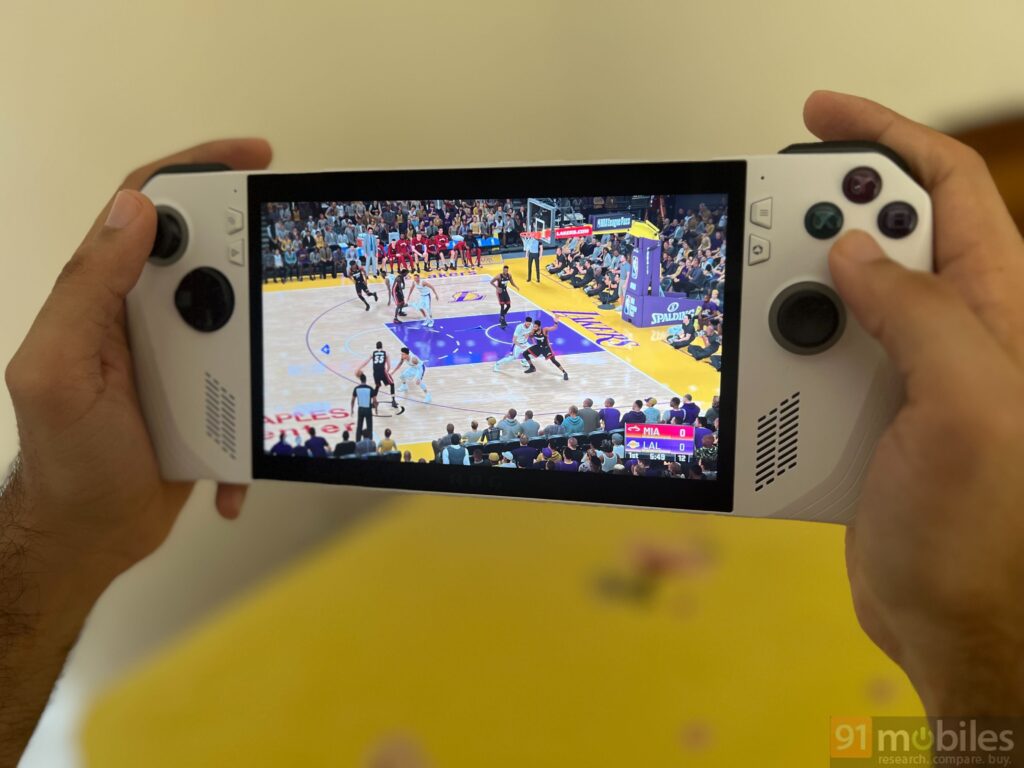
The key aspect of the device’s performance here is the mode that you choose to operate it on. From the Command Center, you can toggle between 30W (Turbo), 25W, 15W, and 10W modes, depending on your use case and you can even choose to have a Real-time Monitor on display to check the processor and CPU usage while running games.
You also get the option to set game profiles, a handy option for key mapping, adjusting vibration, trigger functionality, and even the dead zone and outer threshold of analog sticks. For those of you who like to customise controls, this would enable a great degree of freedom while playing games and as you can set the game profiles to your liking, you would not have to make these tweaks every time you switch the game on.
Battery life and optimisations
This is one department where ASUS ROG Ally actually struggles. If you have ever owned a gaming laptop, you might already be aware of the fact that portable devices that are capable of playing graphically intensive games usually do not offer great battery backup. With the ROG Ally, sadly things are no different. For me personally, while playing NBA 2k21 at 30W Turbo Mode, the device dropped from 100 percent to 50 percent in around 25 minutes. As we are talking about Turbo Mode here, which pushes the device to its limits when it comes to performance, you can expect up to 3.5 – 4 hours of backup with other performance modes, but the one thing you will have to keep in mind is that ROG Ally is a gaming device that will need a charging point from time to time.
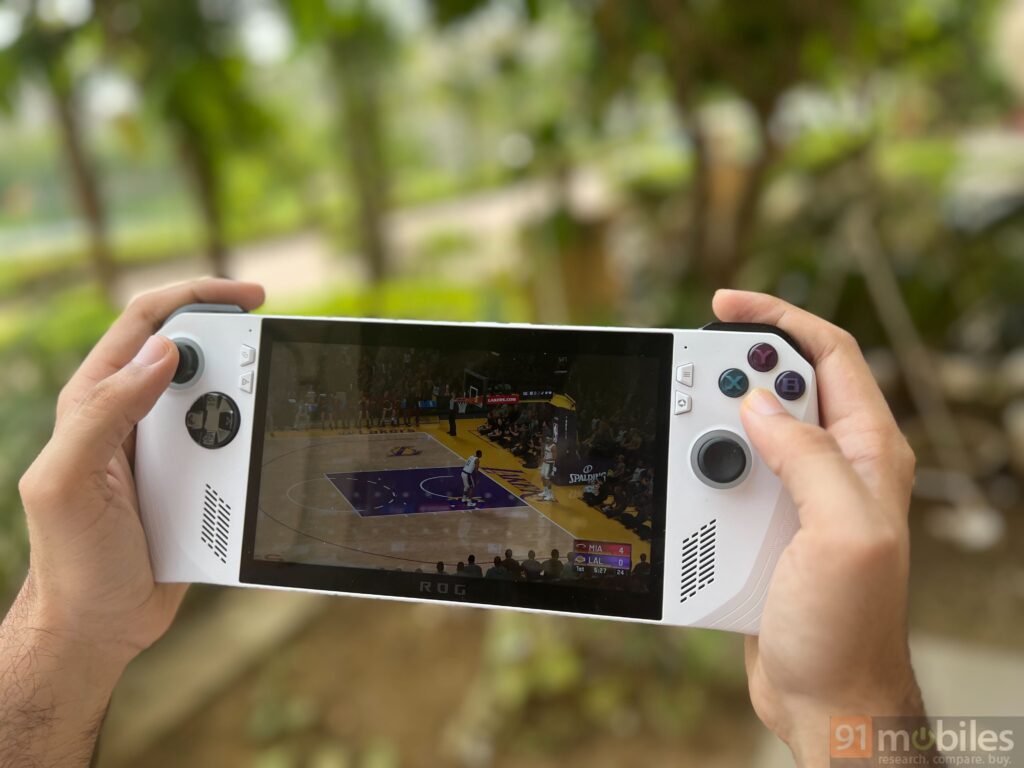
If you are expecting a long battery backup along with the performance, you will, unfortunately, have to compromise on one of the two. One of the things that I personally found useful to get better battery backup was switching to operating mode while using Windows applications.
Armory Crate
Armory Crate has been designed to be a one-stop destination for all your customisation needs while using ROG Ally. It even has a dedicated button on the right side of the display. This crate essentially lets you toggle between various settings, and you can even choose to add/remove certain settings depending on your requirements. For example, if you are struggling with performance in a certain game, you can choose to have FPS Limiter enabled to experience a consistent frame rate. By optimising your usage, you can easily extract more juice from the battery and get a more enjoyable experience. This is an essential feature for Ally and makes the device extremely convenient to use as the overlay can be used even while playing a game without any interruption.
The Windows experience and can it replace your PC/laptop?
The ROG Ally can work as a full-fledged Windows PC, for better or for worse. This means that the error messages and pop-ups that you might be used to encountering on your PC do present themselves here as well. The text can be hard to read at times too, which means that there are compromises here unless you connect it to a monitor through its dedicated dock. Unfortunately, we were not sent the dock along with the review unit, so we can only share that if you get your hands on one, you will be able to play games up to 4K resolution (at 60fps) and use Ally as a regular computer as well. We did however connect the Ally to an external monitor through a third-party USB Type C to HDMI adapter. In our testing, we managed to play games at 1080p resolution through this converter and didn’t face any performance issues.
Coming to the experience with Windows 11, while ASUS has already refined the software since the launch and is continuing to improve user experience through updates, I did multiple issues in this department with Ally. Whether it was launching games or trying to switch between windows, the user interface felt anything but polished. Having said that, I would still say for a start, it is promising. While I think a tablet can never replace a PC/Laptop, a future version of this product can definitely achieve this feat. If ASUS can make the experience smoother, the company could have a winner here.
Verdict
ASUS ROG Ally is an extremely promising product that screams potential. Due to its portable nature, you can experience PC gaming on the move like never before, and with a high-resolution display along with powerful hardware, it feels like living a childhood dream. However, as this is a first-generation product, the software feels less polished, the battery life can drain really fast, and at times, the handheld gets hot while playing games too. As these are crucial areas for user experience, and the ROG Ally comes at a steep retail price of Rs 69,990, we can safely say that it is currently meant for enthusiasts only. However, with software updates and some refinements, if ASUS can improve in these areas, it can definitely replace entry-level gaming laptops for most people. Personally, I can’t wait to see what the brand does with the next generation of this device.
Editor’s rating: 7 / 10
Reasons to buy
- Handles graphically intensive games well
- High-resolution display with 120Hz refresh rate
- RGB lighting gives it an ideal look for gamers
- Loads of customisation options
Reasons not to buy
- Poor battery life
- Buggy software experience
The post ASUS ROG Ally review: pushing the boundaries for portable gaming first appeared on 91mobiles.com.
0 Comments